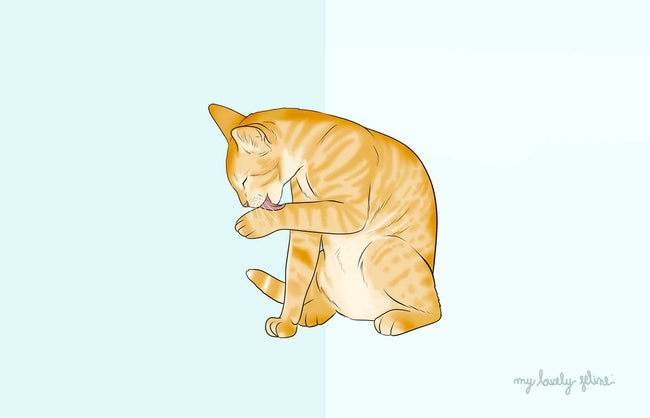—Veterinarian 🇺🇸
|
Most veterinarians, animal rescues, and the general public recommend spaying or neutering pet cats, but why is that? The short answer is that it reduces the risk of unwanted kittens and is overall a healthier option than leaving cats reproductively intact. In this article, I will discuss everything you ever need to know about spaying and neutering in cats. |
What exactly are spaying and neutering?
Spay is a short word for the medical procedure termed “ovariohysterectomy.” This procedure involves the surgical removal of an animal’s ovaries and uterus.
Neuter is short for orchiectomy, which involves the complete removal of an animal’s testicles.
Both procedures require anesthesia and make cats unable to reproduce.
Benefits of Spaying
Intact female cats are likely to develop mammary cancer, uterine cancer, or ovarian cancer. All of these types of cancer can be potentially deadly and can be very expensive to successfully treat with surgery and chemotherapy.
Spaying a female cat prior to 6 months of age (before their first heat cycle) reduces their risk of mammary cancer by 91%.
Spaying a cat removes their ovaries and uterus, thus eliminating their risk for ovarian or uterine cancer.
By removing the uterus and ovaries, we eliminate the risk for female cats to develop other deadly conditions such as pyometra (infection of the uterus).
Spaying female cats also reduces undesirable behaviors that go along with being in heat. These behaviors include excessive vocalizing, urine spraying, and demanding or even aggressive behavior.
Intact female cats are also more likely to escape outside and be hit by a car or get lost, etc.
Benefits of Neutering
Neutering cats eliminates their risk of testicular cancer by removing the testicle.
Neutering also decreases the risk of inflammation of the prostate.
Testicles are also responsible for the production of testosterone. In intact male cats, this excess of testosterone is responsible for many undesirable behaviors such as urine spraying, running away, biting, scratching, etc. By removing the testicles, male cats are more docile.
Prevention of Overpopulation
A single female cat and her offspring have the potential to produce 420,000 cats over just seven years. In order to reduce the number of unwanted cats in animal shelters, veterinarians recommend all cats are spayed or neutered.
What to Expect
Veterinarians typically recommend a small blood panel before surgery to ensure your cat is healthy enough for anesthesia.
The surgical procedure itself only takes between 5-10 minutes for neuters and 20-30 minutes for spays, pending there are no complications. The surgical incision is typically very small and most veterinarians use sutures that dissolve in the skin over the course of a few weeks.
Cats typically get to go home the same day they receive surgery. Most veterinarians will recommend that your cat remain calm and inside only for about 14 days to encourage healing.
They may recommend your cat wear an Elizabethan collar so they don’t lick at their surgical incision site. Sometimes medications for inflammation, pain, or sedation are prescribed.
Your cat will likely be feeling back to normal in about 3-5 days post-surgery.
Side Effects
The hormones produced by the ovaries and testicles play a part in the feline metabolic rate. Once these hormone-producing organs are removed, cats typically develop a slower metabolism and thus have a lower energy demand.
Once cats are spayed or neutered, veterinarians typically recommend reducing food intake to account for this shift in metabolism and energy needs. This helps to keep your cat at an ideal body weight after surgery.
If a cat’s diet is not altered after they are spayed or neutered, it is very likely they will develop obesity within a few short months to years.
Most cats adopted from a shelter have already been spayed or neutered.
Most veterinarians recommend that cats are spayed or neutered once they have received all of their vaccines. This is because spaying/neutering has reduced the amount of unwanted kittens/cats that end up in animal shelters, and greatly reduces the risk of many hormone-related diseases and illnesses.
Preparing for Kittens
Make a safe, comfortable spot for the kittens and mom. A cardboard box lined with newspaper, old sheets, or towels is a great method! The bed should be warm, cozy, and private, but should also be where you can keep a good eye on them.
Q&A
Q: Should I let my cat have babies before I spay them?
A: This decision is really up to you and whether breeding is an option for you or your particular cat.
Most veterinarians recommend that animals are spayed before their first heat cycle (before the age of 7 months or so). This drastically reduces the risk of mammary tumors later in life, prevents uterine infections and unwanted pregnancy.
In addition, early age pregnancy places great strain on the body, often resulting in birth defects and problems nursing.
Q: How often do intact cats go into heat?
A: Cats go into heat for the first time typically when they are 5-7 months old. A cat will be in heat (receptive to mating and able to become pregnant) for up to two weeks and then go out of heat. If she has not been mated, two weeks later, she will go back into heat again. This cycling in and out of heat will continue for several months.
Heat cycles in cats occur twice a year, and cats will often at some point in time escape outside in order to mate.
Q: What are the risks?
A: Even though spays and neuters are major surgical procedures, they are some of the most common procedures performed by veterinarians.
Before the procedure, your pet is given a thorough physical examination and pre-op blood work to prevent any unexpected complications.
Just like any surgery, there are risks associated with anesthesia and potential surgical complications. The overall occurrence of these risks is extremely rare in a healthy cat.
During a spay or neuter surgery, cats and dogs are fully anesthetized, so they do not feel pain.
Article by Dr. Kimberly Couch 👩⚕️
Veterinarian




